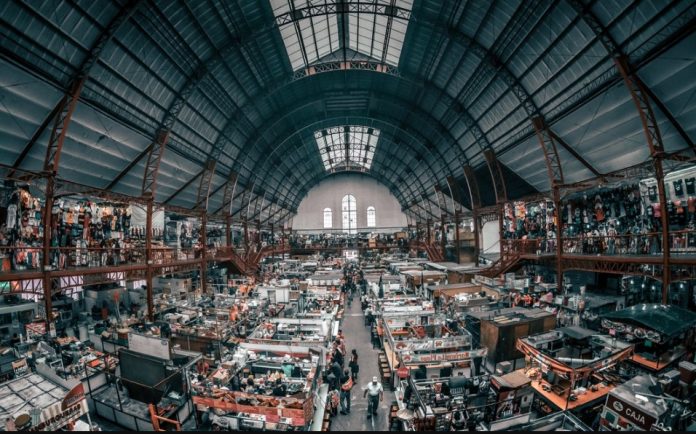Safety is something you must take seriously in a warehouse. You’re dealing with heavy objects, machinery, and other hazardous conditions. And when work injuries cost companies $163.9 billion in 2020, it pays to make your warehouse safe for your workers.
But doing so is easier said than done. Without the proper procedures and equipment, your workers will be at more risk each day they are on the job.
You owe it to your workers to offer the best warehouse safety rules possible to keep everyone safe. Follow the warehouse safety tips below to create a safe environment for everyone.
1. Provide Protective Equipment
Having the right equipment is one of the first things to do to protect your workers. The equipment you need will depend on the type of work your warehouse workers do. You’ll need equipment for the parts of the body that are most exposed to danger.
Take the case when a worker’s feet are in danger. You don’t want workers to wear regular shoes when working in your warehouse. Provide steel-toe boots to protect your employee’s feet when they are working.
Here are a few other examples of protective equipment worth considering:
- Gloves
- Helmets
- Masks
- Safety glasses
- Earplugs
- Safety suits
2. Identify Hazardous Areas
It’s hard to stay safe in a warehouse when you don’t know where dangerous areas are. When someone doesn’t expect something dangerous to happen, they don’t take precautions to keep themselves safe.
It’s important to understand where these areas are in your warehouse. Look at your entire operation to see where the likelihood of getting hurt is. Mark them down to keep track of where they are.
Once you have all the dangerous areas marked, the next step is to put up signage there. These signs will help keep employees informed to ensure they make safe decisions in those areas.
3. Perform Maintenance
Although your equipment will usually work well, that won’t always be the case. Things will wear down over time. If you let things get too bad, they will break down and cause problems.
This can lead to accidents and injuries when that happens.
Take pallet jack wheels, for instance. What would happen if they were loose and resulted in your pallet jack causing an accident?
However, you can avoid problems by working on your equipment and keeping it in great shape. Create a schedule for handling this work. If you have a lot of equipment, you can create a routine that helps you inspect everything over time instead of doing everything at once.
4. Provide Environmental Control
It’s not easy to keep the climate in a warehouse under control. You can’t easily heat and cool the space, so temperatures and humidity can get out of control and make it hard to work there.
This can lead to problems if your workers have strenuous jobs. This is even worse in the heat.
Do what you can to keep a good climate in the warehouse. If this isn’t possible, you need to make sure your workers have a way to take breaks and hydrate. Otherwise, you risk people overworking themselves and putting themselves at risk.
5. Stock Emergency Supplies
Even if you do everything right to create a safe warehouse protocol, that doesn’t mean accidents will never happen. Equipment can fail, and people will make mistakes. How you respond when this happens can be important in how bad things get.
Having the right supplies can make the difference between a bad accident and one that isn’t a problem. Emergency supplies will help you treat injuries and keep everyone stable until help arrives.
Stock these supplies throughout your warehouse in easy-to-access locations. Let everyone know where to find the supplies and how to use them to treat injuries.
6. Create Standard Procedures
The last thing you want in a warehouse is people doing things their own way. Even if someone gets the job done, if they don’t do things safely, it puts everyone at risk.
You need standard procedures for every task in your warehouse. Make a list of the tasks your employees regularly do and think about things that will go wrong.
Once you do, create procedures that make sense. These procedures should keep everyone safe and minimize the risk of an accident.
7. Verify Storage Integrity
Your equipment isn’t the only thing you need to make sure is in good shape in your warehouse. As time passes, your storage racks and other storage objects will break down.
Regularly inspect your storage areas to make sure everything is in good shape. Your wood pallets are one of the big things to look for problems with when you do this. You don’t want wood cracking and causing things to come crashing down.
8. Train Your Team
The best warehouse safety protocol isn’t worth much if your team doesn’t follow the rules. You need people to follow your safety protocols to stay safe when working each day.
Create a training system to inform employees of your warehouse safety rules. The safety guide should cover everything that they need to do for their job.
Don’t let anyone work in your warehouse without training on safety first. When you go this route, people will be more informed and less likely to make mistakes.
Use These Warehouse Safety Tips Today
Things aren’t always safe in a warehouse. You’re dealing with heavy objects and machinery. If something goes wrong, it can hurt employees on the job.
That’s why it’s essential to optimize warehouse safety in your organization. Put the warehouse safety tips above into place today to keep employees safe when they’re on the job.
Do you want to learn more tips that will help you run your warehouse operations? Read more helpful advice on the blog.


